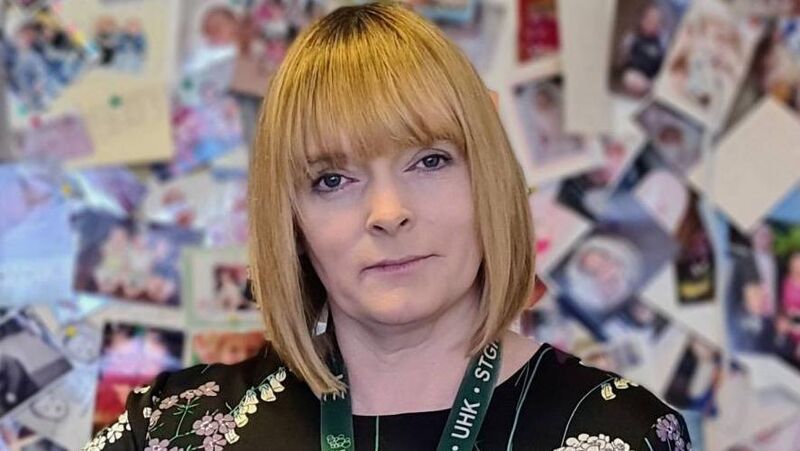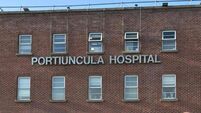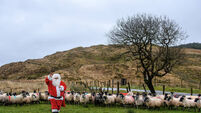Inside the Nicu: the Cork neonatal unit caring for thousands of tiny patients

Research support officer Mary Anne Ryan with Michelle Magee from Lehenaghmore cradling her one-week-old son Luke at the neonatal intensive care unit in Cork University Maternity Hospital. Picture: David Creedon
One unit in Cork University Maternity Hospital does not have any beds. Instead, its tiny patients lie in incubators while their worried parents watch every breath.
The incubators line the walls leaving space for sinks, equipment, and for staff to move easily between the little patients.
Some incubators are covered by colourful quilts.
Two, standing side-by-side, hold twins — each connected to life-saving machines through a network of the narrowest wires and small sensors.
Mechanical beeping is constant, with one father saying parents cannot tell a good beep from a bad beep.
Nobody is running through the neonatal intensive care unit (Nicu) or shouting. It is no doubt a terrifying place for any parent, but somehow eerily calm.
Michelle Magee, from Lehenaghmore in Cork, sits on a green chair near an incubator.
Her son Luke Lynch, just one week old, having been born at 31 weeks' gestation, sleeps on her chest.
She smiles and strokes his head swaddled in a miniature white cap.
Luke naps upright, skin-to-skin on his mother, in a hold known as kangaroo mother care.
He is one of between 1,300 and 1,500 babies cared for here annually.
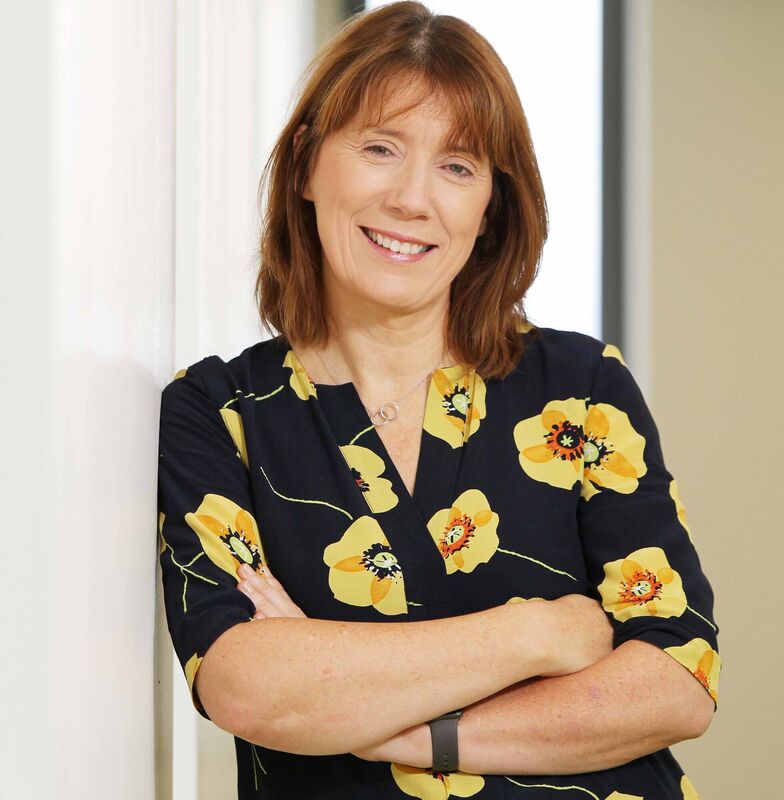
Up to 90 babies weigh less than 1,500g, and 120 are born at less than 32 weeks gestation.
Some stay for days, but others have needed help for up to six months.
Research support officer and nurse Mary Anne Ryan was sitting with Michelle, saying that the unit can be a very emotional place.
“Parents support each other and chat, and that’s a way of release for them,” she said.
“It would be very hard if they [staff] were completely desensitised to what’s going on in the unit, and working with no consideration of emotions.
“I don’t think there’s anyone in the unit who has that, you need to be very in tune with everybody there,” she added.
Survival rates for babies born as early as 23 weeks gestation are between 50% and 60% in this unit.
Others were born at full term but faced health challenges.
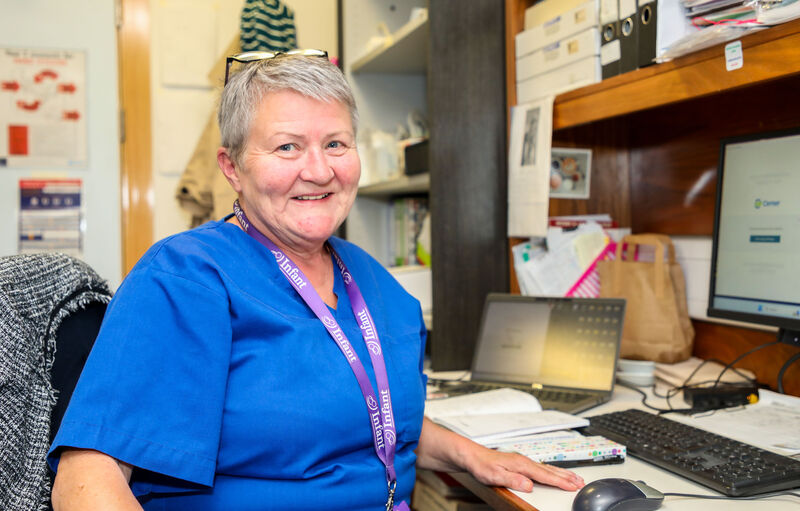
What is not so easily visible are the years of research and clinical trials underlying this success.
Even the way Michelle held baby Luke was determined by data. Kangaroo care has been shown to effectively improve health for pre-term and low birthweight babies.
The Horgan chair in neonatology at the Irish Centre for Maternal and Child Health Research (Infant) hosted by University College Cork, Prof Eugene Dempsey, said the chair design was also analysed.
The centre is marking its 10-year anniversary, with many babies here and around the world having benefitted from its discoveries.
In one example, two trials in the international iCOMP project were carried out in Cork.
This found that waiting for at least two minutes before clamping the cord of a premature baby may reduce the risk of death by two thirds — among other reasons for delaying clamping.
“We were the first group internationally to look at the impact of just when you clamp the cord, so [asking] right at the time the cord is clamped: What happens to the heart?” he said.
A trainee in the delivery room would use an echo probe, he said, “[to] actually scan the heart very quickly as the baby is just delivered”.
This can be compared with scans after clamping including five minutes after birth and 24 hours after birth.
“All of this work before was done on lambs, pre-term lambs, so this was the first human study,” he said, saying it is difficult to do during a birth.
Prof Dempsey pointed out small machines being repaired in a side-room, saying their work takes a team including engineers, midwives, nurses, obstetricians, paediatrics, allied healthcare workers, and researchers.
Within their research, he said: “There’s a big focus on preventing brain injury in pre-term infants and term infants.”
The Algorithm for Neonatal Seizure Recognition study (ANSeR) led to an algorithm to help detect neo-natal brain seizures in newborns.
While some seizures are obvious, others are too subtle to see.
“Probably the most critical thing about the progress in terms of survival at pre-term gestation at 23, 24, 25 weeks is actually culture, it’s a can-do attitude,” Prof Dempsey said.
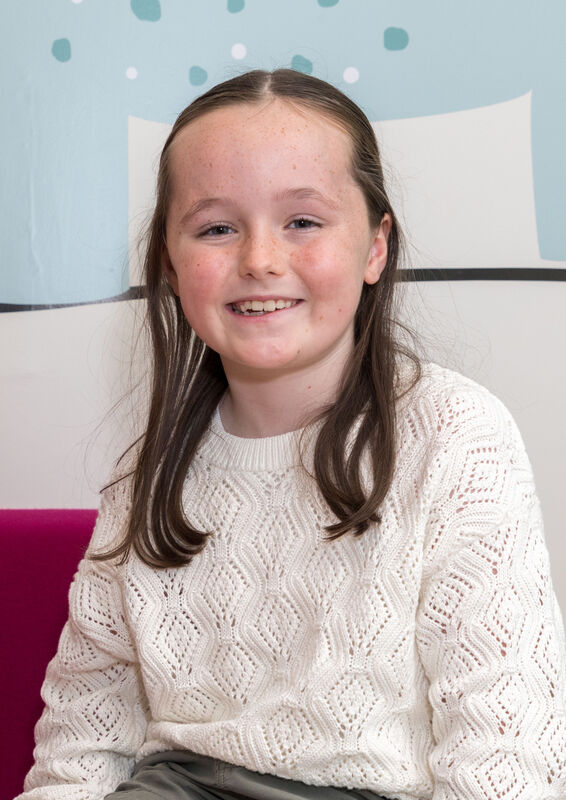
“Everybody does buy in here, and everybody has.
“Our survival rate here at 23 weeks gestation has steadily increased.”
Cork University Maternity Hospital is a tertiary centre for Munster, which means women can be transferred from maternity units in Waterford, Clonmel, and Tralee.
It is a complex area of medicine, and Prof Dempsey acknowledged: “One of the biggest worries parents have is the long-term neurodevelopmental outcome.
“Certainly there are a small percentage who can have significant long-term problems.
“For those babies, it is about ensuring the appropriate follow-up and intervention happens.”
None of this happens without families, Ms Ryan explained of her work as a PhD graduate with the research centre. She added:
“It’s not just a case of going up to them, you need to check out where they’re at and what’s going on in the background for them.”
With over 50 clinical studies going on at any time in the hospital, many volunteers are needed.
Infant director Prof Geraldine Boylan said: “Babies are not small adults, and they need their own research specifically designed for them — that is why we do it.”
In fact, the majority of babies come through and have a very good quality of life
At 10 years of age, Tara-Lee Harte is a little baffled as to why people keep asking her about what happened the week she was born.
She does not remember but it is as clear as yesterday for her parents in Clonakilty.
“One of the things that always stays with me is the pinging of the machines, it’s just a surreal thing. Is that a good ping or a bad ping? It’s such an unknown,” her dad Jonas said of the neo-natal intensive care unit (NICU) at Cork University Maternity Hospital.

Her mother Norma described how Tara-Lee was blue when she was born in August 2014 and did not breathe for almost 20 minutes.
“When they realised the delivery wasn’t going to plan, the neo-natal intensive care team had been up [to the delivery room], so they were waiting for her,” she said.
Staff used a then-new algorithm tool which helped interpret EEG readings. The EEG measures tiny electrical brain impulses using small sensors on the baby’s head. The algorithm was developed at the Infant centre, hosted by University College Cork, and can detect neo-natal seizures. While some seizures are obvious, others are too subtle to see.
Tara-Lee was placed on a cooling mat, which lowers body temperature. This process, also new then, can reduce the severity of brain injury, and improve a baby’s chance of surviving without disability. “She had all the monitors on, the cooling pad on her head, two big black eyes, and was non-responsive essentially,” Jonas said.
He recalled: “It was traumatic — that’s the only way to describe it. She was very, very sick.”
The next few days were tense until, four days later, good news found them on a couch outside the NICU.
“As more and more tests came back, it was getting really, really positive, and on the Friday they had the brain scan, which proved her brain was functioning normally and all was good,” he said.
In the hospital this week, Tara-Lee was relaxed, and said: “I don’t remember it so I don’t feel any big emotions now.”
She is going into fourth class, but her proud father said she has already completed the maths curriculum for that class.
“We’ve a lot to be thankful for, and science definitely helped us a lot along the way,” he said.
She and her older brother Rory have taken part in tests and trials at Infant since then.
Jonas added: “We’ve been more than willing to help. It’s not that any of their research now is going to help us, but I’d like to think that in 10 years’ time the information they’ve garnered from the tests will help someone else.”
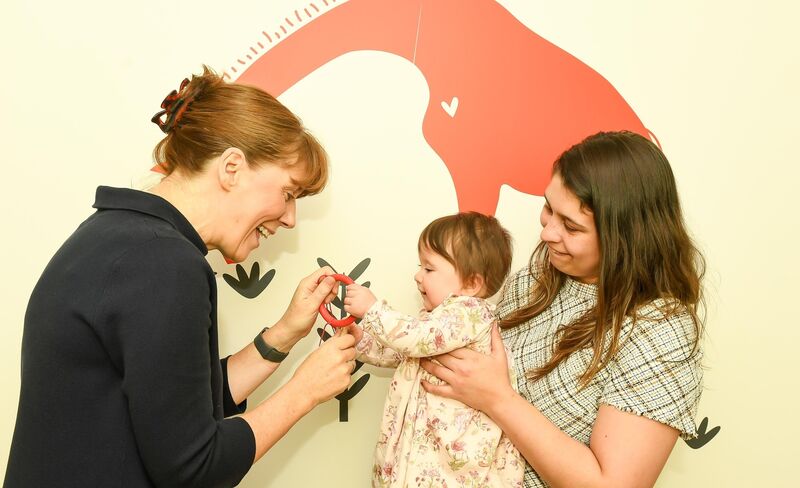
Among their successes have been the world’s first AI algorithm for seizure detection in babies, a pioneering device measuring cognitive function in children which is independent of language barriers, and contributing to groundbreaking therapies for peanut allergies in children.
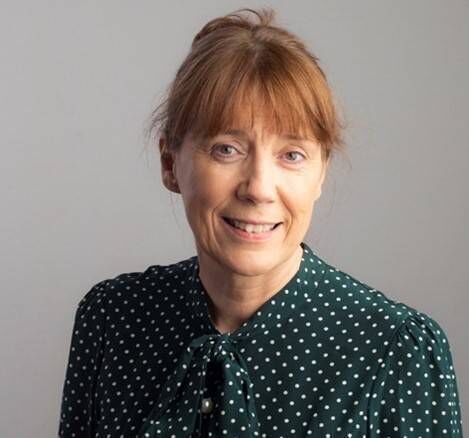
National guidelines for bereavement in maternity services in Ireland were informed by research carried out by Cork’s Infant centre.
Infant (Irish Centre for Maternal and Child Health Research) started with eight principal investigators a decade ago and now has more than 100 staff and students at the site, hosted by University College Cork.
The National Standards for Bereavement Care Following Pregnancy Loss and Perinatal Death were published last year, following recommendations made after the death of Savita Halappanavar in 2013.
Research conducted by the Pregnancy Loss Research Group at Infant UCC, and the expertise of its members, played a pivotal role in informing the development, and later the implementation, of these standards.

This was led by Professor Keelin O’Donoghue, national implementation lead for the standards and lead, Pregnancy Loss Research Group, at Infant.
The group brings people from different specialities together to lead national research and look at ways to better understand pregnancy loss.
Their research also looks at how health or social supports can be improved for families during this traumatic time.
Among other direct results of their work with bereavement is a training workshop for staff, based on the standards. The Teardrop workshops cover communication with parents as well as other topics.
Infant director Professor Geraldine Boylan said: “Our research informs healthcare guidelines and policies, and that’s how we ensure the latest research and innovations benefit our patients.”
There are over 50 studies active at the moment, including links with international research, she said.
